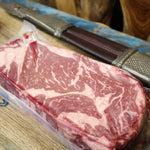
Chapter 2: Roasting Over Flames
As we navigate the corridors of time, we arrive at the pivotal chapter of roasting meat over flames—an ancient culinary practice that mirrors the evolution of human societies. Delving into the historical record, we uncover the approximate dates and factual underpinnings of this gastronomic journey.
Approximately 1.8 million years ago, during the era of Homo erectus, the controlled use of fire became a transformative aspect of human existence. It was around this time that early humans, armed with the ability to harness and manipulate fire, began to experiment with the culinary possibilities of roasting meat. Archaeological evidence, including findings from the site of Zhoukoudian in China, provides insights into the early mastery of fire for cooking purposes.
Picture the scenes of communal fires where early Homo erectus gathered around 400,000 to 200,000 years ago. The tough cuts of meat, once challenging to consume in their raw state, underwent a metamorphosis over open flames. The act of roasting, documented in sites like Qesem Cave in Israel, showcased not only an understanding of culinary techniques but also the social aspects of communal dining.
Advancing through time, archaeological records indicate that by 10,000 BCE, the practice of roasting meat over open flames had become ingrained in human societies. The transition from the Paleolithic to the Neolithic era witnessed the refinement of culinary practices. Sites like Göbekli Tepe in Turkey provide glimpses into how early humans, now engaged in settled agricultural communities, continued the tradition of roasting meat.
In ancient civilizations, the art of roasting meat reached new heights. Around 2000 BCE, in Mesopotamia, beef became a symbol of wealth and opulence. Feasts featuring elaborate roasts were documented in cuneiform tablets, providing a window into the culinary prowess of the time.
The Middle Ages marked not only the continuation but the refinement of the roasting tradition. By the 12th century, whole cattle were slowly turning on spits at festivals and celebrations, contributing to the communal aspect of feasting on beef.
The Renaissance era witnessed a democratization of beef consumption. No longer reserved for grand banquets, beef found its way into the daily fare of common folk. The 16th century saw European aristocracy shaping beef into a versatile and accessible ingredient, further advancing culinary techniques.
Roasting beef over an open flame wasn't just a practical culinary method; it became a cultural symbol. The crackling fires told tales of abundance, of mastery over the elements, and the transformative power of culinary innovation.
And so, our journey through the evolution of beef consumption—from the primal flames of 1.8 million years ago to the refined culinary traditions of ancient civilizations—becomes a testament to the enduring connection between humanity and the timeless art of roasting.



